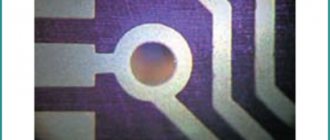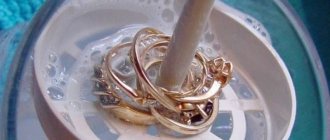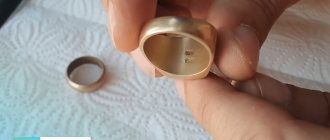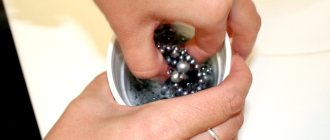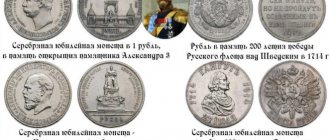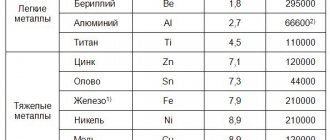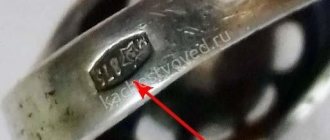How and with what to wash grease from clothes?
“Unremovable stain” - in most cases, this is the name given to the area of clothing that has come into contact with grease. Its use occurs in agriculture, medicine and technology. Despite access to this substance only in the above-mentioned areas of activity, people manage to get dirty with it under various circumstances that are far from them. However, observing a dark greasy stain on your jeans (or any other element of your wardrobe), the question “Where from?” is not as relevant as “How to wash grease?”
Properties of solid oil
In order to choose the right method for removing grease stains from clothes, you need to become more thoroughly familiar with the substance itself.
This will allow you to get rid of the stain more effectively, and not completely ruin the stained item. So, grease is a substance necessary when working with mechanisms in various industries. It includes:
- petroleum oil;
- calcium soap.
fatty acid;
The names of the elements of the grease composition emphasize the seriousness of the stain removal process. The substance penetrates deep into the tissue, merging with the fibers. It should be noted that all methods of cleaning from grease may not always have a positive result. Often the paint comes off along with the substance. The fibers can also stretch and thin. There are also cases when an item is simply thrown away.
Rats are ubiquitous spreaders of infection. We recommend that you learn how to get rid of rats in a private home and country house.
What kind of glue is best for sealing an air mattress, read here.
There are few ways to wash grease, and they are divided into folk and modern. The effectiveness of each of them is determined by:
They are listed below.
Traditional methods for removing grease stains
As a rule, after contact of clothing with grease, it is better not to delay it, and try to wipe off the stain as quickly as possible. The urgency is explained by the rapid absorption of the substance into the fibers of the fabric. Naturally, the removal operation occurs using improvised means.
Vinegar
Two tablespoons of vinegar must be added to 0.5 water.
After thorough mixing, dip two cotton pads in the resulting mixture. Next, we press them firmly against the fabric, and we do this on both sides at the same time. Thus, the discs need to be kept for a couple of minutes without removing them. When the time is up, you need to start wiping the stain, trying not to go beyond the contours. The final step is to wash the clothes in the washing machine using regular powder. You can replace the powder with an enzyme detergent. After washing is finished, you need to hang the item to dry in fresh air.
Turpentine
It alternates with treatment with butter, as this is a better combination of products than removing grease stains. There is no need to mix them. Simply apply a layer of oil to the stain and let it soak in a little. Before doing this, the butter must be thoroughly kneaded in your hands until it takes a soft form.
After an hour, you need to start rubbing the stain with turpentine. After completion, you need to wash the item in the washing machine at the highest temperature.
Ammonia and gasoline
The method is used when grease remains on the fabric for a long time, since the substance has already been strongly absorbed into the clothing. First, soak a cotton pad in gasoline, and then rub it on the stain. After waiting until it becomes softer, you need to drip a little ammonia (it’s worth noting - not ethyl). After this, the item is immediately placed in the washing machine and mixed with the highest quality powder. The washing procedure can be repeated several times if necessary.
We recommend learning how to iron a pleated skirt.
We will tell you how to remove potassium permanganate stains here.
water vapor
In order to resort to this method, you need to stock up on turpentine and ammonia. Heated turpentine is applied to a dry, clean rag. The stain is rubbed with a rag for several minutes, after which a little ammonia (a few drops) is dripped onto it. The item is then held over boiling water, which produces steam. Thus, the stain is removed using a real “water bath”. The main thing is to carry out the procedure for no more than 5 minutes. Finally, the item is placed in the washing machine. Washing occurs as usual.
Soap and margarine
The margarine must be slightly warmed up, and then applied to the grease stain. The fabric remains in this form for 2 hours (for the best effect - 3 hours). This way the reagent will work. After the margarine is absorbed into the item, it must be washed with laundry soap.
Ammonia and glycerin
This combination of how to wash grease from clothes is ideal if soft, fine fabrics (for example, silk and fine wool) are damaged by the chemical. Warm water must be poured into a plastic container. Add ammonia and glycerin to it, calculating 1 tablespoon of each substance. The clothes are soaked in the resulting solution for 30 minutes. Next, you need to pull it out and evaluate the result. If the stain does not come off, you should resort to re-soaking. If the result is positive, clothes should be rinsed a couple of times in cold water.
Petrol
The method is extremely simple. You need to moisten the grease stain with gasoline, and then rub it with a soft brush. If the result is successful, the item is sent to the washing machine. Otherwise, the procedure is repeated.
Rules for removing grease stains
A fresh stain can be removed using cotton napkins. The material quickly absorbs grease and facilitates the washing process. You can get rid of old dirt using hot water and steam.
First, you need to treat the edges of the stains, as there is a risk of streaks. After this, the item must be sent for washing. To eliminate the unpleasant odor of grease, you can use air conditioning.
Solid oil
During the washing process, you must adhere to the following rules:
- The water temperature should not exceed 45 degrees.
- Processing of clothing should begin from the wrong side. It is recommended to place a cloth under the fresh stain that will absorb the grease.
- It is best to avoid chemicals that can destroy matter. Aggressive substances pose a danger to delicate and synthetic materials.
- You can clean clothes not only with household chemicals. There are folk remedies that can remove oil stains in a safer way.
Modern methods of removing grease stains
Not everyone trusts folk remedies, but they also don’t want to be content with the presence of an oil stain on their clothes. In such cases, special means are suitable.
Stain remover
It is necessary to select a substance that matches the type of tissue of the affected item. After applying the stain remover, you need to wipe the area with a toothbrush. If the result is positive, the item is rinsed in cool water and sent to dry.
Car shampoo
The method involves applying car shampoo to the affected area of the fabric. There is no need to rub, the main thing is not to touch the thing for 30 minutes, after which you need to evaluate the results. If the stain does not disappear, then the application of car shampoo should be repeated, but this time wiping the stain. After waiting another 30 minutes, you can evaluate the result. When the stain disappears, just rinse the clothes. Otherwise, you will have to throw it away, since nothing will help.
Safe chemical compositions
Stain remover
A simple and effective method, but such products should be used carefully and strictly according to the instructions. First you need to choose a stain remover that is suitable for treating fabric stained with grease. Then apply a small amount of product to the stain and leave for the amount of time indicated in the instructions. Under no circumstances should you exceed the time period allowed by the manufacturer: the stain remover can simply “eat away” the fabric.
Afterwards, carefully clean the material using a soft clothes brush (if the dirt is large) or an old toothbrush. Rinse the product thoroughly in cold water and wash with added powder.
Car shampoo
A non-standard, but very effective method for removing grease stains when used correctly. Apply a small amount of undiluted car shampoo onto the grease mark and leave to act for 30-40 minutes (no need to rub the cloth). Then rinse the product in cold water. If necessary, the procedure can be repeated, only this time slightly foam the composition. And rinse the product again in clean water.
Attention! This material is subjective in nature, does not constitute advertising and does not serve as a purchase guide. Before purchasing, consultation with a specialist is required.
let's talk about anticorrosive
Theme Options
Search by topic
Your chief chemist speaks the truth. Kuzbaslak has a couple more pleasant features. It does not absorb salts and active chemicals, unlike the same mastics and other fat-containing compounds. Even Movil accumulates reagents from roads in winter, so it needs to be updated once a year. And the fact that they repel water. So this is not the main thing in the corrosion process. And water + oxygen! If you add acid, then it will vanish by leaps and bounds.
Try washing your hands with the reagent they sprinkle on roads. or just Soap and Soda. Judging by what is written. The result may be surprising! This is how I wash my hands of grease.
It is not worth diluting it liquidly. It then lies down unevenly. And it doesn’t eat into materials well. Just the thickest one you need to buy. and it’s better to take it from the warriors. In stores they sometimes sell zalepukha under this name.
Karcher will blow everything away, even if you coat the entire frame with lubricants. Anyway, sooner or later, you will have to wash it.
Using an impeller, if you do not remove the metal layer with a grinding wheel, but try to remove the rust with a grid or flap wheel, you will only lick the layer of corrosion. I went through it and it looked like everything was cleaned up and shiny, but I picked it up and scratched it with something sharp, and there it was, brown underneath again. On the Internet, someone even posted a clear example, including pictures under a microscope.
We simply remove the rust with files sharpened like chisels. It’s very good to pick out dirt and rust from corners and holes. I don’t argue that it’s a big deal, but as our Zampotech says. " Guys! You don't have to be afraid of a guy, you need to love a guy!
” :))
Last edited by SLAVYANIN; 02.09.2016 at 10:01.
Solid oil is outdated. Amno! A PVK
did you wash your hands? And it is used in a solution with bitumen mastic, plus armoring with sand. There, a crust formed in an arch on top of the mastic. Again, you read my post about AMS, MS-70, MZ lubricants for lubricating mechanisms in salt water.
Last edited by VladMan; 02.09.2016 at 16:01.
Comrade Reeves, have you read my posts about the carcinogenicity and toxicity of Kuzbasslak? Or are you not a reader, but a writer?
Solid oil is outdated. Amno! A PVK
did you wash your hands? And it is used in a solution with bitumen mastic, plus armoring with sand. There, a crust formed in an arch on top of the mastic. Again, you read my post about AMS, MS-70, MZ lubricants for lubricating mechanisms in salt water.
Hm. Have you read Google?! There is all sorts of goodness there that cannot be washed off even with sulfuric and hydrochloric acid. I’ll just say... no pretense... You brought up the topic of Solidol, I explained to you how and with what it is washed off. Questions?! About TSK-48 (the one that lubricates the external mechanisms in submarines. Give me the address where you can easily get it! I would sell the little one. There is no such address?! What are we talking about, dear?! I can tell you a bunch of materials that you can’t buy in the store, but the result is just awesome.
Is Kuzbaslak toxic?! And you don’t need to inhale it while you’re painting! And it’s not worth tasting.. Two days ago I covered the fender liners. I cooked it in the fender liners for half a day today. you know, for some reason I didn’t even smell a strong smell. What did I do wrong?! Please advise. I want it to be toxic like Movel in the heat. very very!)))
Any chemical is by definition toxic. And acid for metal is death.
Last edited by RivZ; 02.09.2016 at 16:28.
Recommendations for cleaning clothes stained with grease
If this oil product gets on the fabric, but has not yet dried, you need to immediately blot it with a towel that absorbs moisture well and quickly. This way, you will reduce the time it takes to clean things, and you will also not spoil the fibers of the laundry, which can become “unruly” under the influence of the oil product.
What other recommendations will help restore clothes:
- How to wash grease? To do this, you can use a variety of cleaning agents and detergents. But first, it is worth noting that the dirt should not be rubbed or pressed hard - this, on the contrary, will “help” the lubricant penetrate deep into the fabric. As a result, it will be difficult to remove the resulting stains, and streaks will appear on the surface of the laundry. In this case, you can only get rid of oil contamination using household products.
- Before removing fresh and old stains, the first step is to degrease them. You can use dish soap for this. It is applied to the dirt in a thin layer, after which it remains there for half an hour. Now the item should be rinsed in cool water, thereby removing any remaining grease (to prevent the stain from spreading over the surface of the clothing, only the area treated with the detergent should be washed). In addition to dish soap, talc, chalk, salt or soda will also perfectly degrease the surface.
- If the technical lubricant has had time to dry completely, before removing dirt from things, you need to lightly steam it, thereby softening the oil particles absorbed into the fabric. To carry out this manipulation, clothes must be held over a boiling kettle or tap water. If the apartment has a steam iron, the manipulation can be carried out using steam.
- To quickly and efficiently wash oil-stained laundry, remove dirt from the edge of the stain, gradually moving towards the middle. This will rid the fabric of streaks and also prevent the spread of grease over the surface of the clothing.
How to wash grease? After using any cleaning recipe, be sure to wash the clothes, then dry them naturally and iron them. If things smell of an unpleasant aroma of industrial lubricant, it is recommended to use air conditioning and hang the item in fresh air. Typically, the “aroma” of grease remains after cleaning, so clothing owners will need to take measures to remove it.- Cleaned laundry should be washed in warm water, the temperature of which should not be less than 45 degrees. This will remove any remaining oil that has already been absorbed into the fabric.
- Stains must be removed from the reverse side of items. To do this, they are laid out on a horizontal surface and then leveled to avoid wrinkles. As a result, the contaminated surface must be separated from the main part of the item so that the product being treated does not get on it.
When choosing recipes for cleaning, it is important to note that the use of chemical products requires mandatory compliance with the instructions, as well as safety measures. Traditional recipes do not require strict adherence to instructions, but their cleaning results are less effective. To properly clean your laundry from grease, you can combine dry cleaning with traditional cleaning.
Before you start applying the product to stains, you should definitely check them on the wrong side. Otherwise, delicate fabrics (silk, synthetics and other materials) may lose color, stretch or become less attractive.
Following these tips allows you to carefully and efficiently clean your clothes from grease stains, which significantly spoil their appearance.
General rules for dealing with grease stains
You just can’t wipe off or clean the grease; ordinary water won’t take it. When cleaning up contamination, follow the recommendations:
- before cleaning stains (old or fresh), you need to degrease them, for which you can use any dishwashing detergent; Apply the product to the stained area and leave for 20-25 minutes, then rinse with warm water; You can also use salt, talc or chalk for degreasing;
- if the stain has already dried, then before removing it you need to steam the contaminated area, for which you hold the product over a boiling kettle or use an iron with a steam generation mechanism;
- when cleaning stains, move from the edges to the center in order to prevent the grease from spreading and the appearance of new stains;
- after using any of the suitable products, you must wash, dry and iron the clothes; To prevent the appearance of residual unpleasant odors, use air conditioners and dry clothes in the fresh air;
- washing of items previously cleared of grease should be carried out in water with a temperature of at least 45 degrees;
- It is necessary to wipe off grease stains from the wrong side of the product, and it is advisable to place a well-absorbing fabric under the product.
Traditional methods of cleaning clothes from mechanical grease
It is known that traditional methods are safer for human health, as well as for fabric that has been exposed to oil contamination. However, they are not always effective, so the manipulations must be repeated several times.
The most effective and easy to implement are:
- Table vinegar. A bite slightly diluted with water will help overcome a completely absorbed and dried stain. For 500 ml of liquid you need to take 3 tablespoons of vinegar, then stir it well in water. The resulting solution is applied to the contaminated area using a rag. If the oil stains are large, you can soak a cotton pad in the solution and then place it on top of the stains. As cleaning proceeds, the item should be washed with any powder.
Butter (natural). A piece of defrosted butter is placed on the area of clothing on which the grease is located, after which you need to wait 30 minutes. Then the treated area is rubbed with soap and washed in hot water to remove the unpleasant aroma.- Soap and margarine. The contaminated area is rubbed with margarine and left for 2 hours. Then gasoline is poured onto the oil stain and rubbed with laundry soap. After this, the laundry is washed.
- Ammonia and pure gasoline. Solid oil is afraid of interacting with gasoline, so when it is applied to stains, the oil structure begins to quickly remove. Gasoline is applied to a rag, and then the dirty cloth is wiped with it. After 30 minutes, the area is re-treated with ammonia, the effect of which lasts for half an hour. You should wash things with a powder that removes difficult stains.
- Turpentine. A fairly effective means of removing grease. The liquid is applied to the oil composition for 1 hour, after which it is thoroughly wiped off the fabric with ammonia. Then the clothes should be washed in the usual way.
- Ammonia + glycerin. This combination will help get rid of stubborn stains on delicate fabrics. We take the same amount of products, then mix the mixture with water and put the soiled clothes into the freshly prepared solution. After half an hour it can be washed.
Typically, folk remedies clear oil traces 2-3 times, but if they are used immediately after applying grease, it may only require a single procedure.
What is solid oil?
Solid oil is a thick, yellow-colored lubricating technical oil intended for lubricating friction and sliding units of machines and mechanisms. It contains a mixture of petroleum oils, which are thickened with calcium soap of fatty acids.
Every housewife who dealt with stains from this oil asked herself the question of how to remove the grease stain, because it simply eats into the fabric.
Important! This oil is one of those contaminants that are quite difficult to remove. So get ready for a fight.
How to wash grease from clothes?
How to wash and remove grease or Vaseline from a jacket? Before you begin the process of removing industrial oil stains, take a look at what you have on hand. For this procedure you will need:
turpentine;
How to remove grease stains using improvised means?
There are a number of effective folk methods for eliminating traces left by technical oil. Use one of these options and you can easily deal with problematic stains on things.
Option 1
Table vinegar will help you solve the problem. For this:
- Take 2-3 tbsp. vinegar.
- Dissolve it in 0.5 liters of water.
- Soak a cotton pad in the resulting solution.
- Treat dirt with it.
- Wash the item with washing powder.
- Hang clothes out to dry.
Important! Treat contaminated areas, starting from the edge of the stain and gradually moving towards its center. This technology is necessary in order to avoid stains on the fabric.
Option 2
Use butter and turpentine to remove traces of grease:
- Take butter and rub it on the stain.
- Leave it to interact for 40-60 minutes.
- Rub the contaminated area with turpentine.
- Wash the item.
Option 3
Remove corrosive and dried traces of technical oil using gasoline and ammonia. Do the following:
- Soak a cotton pad in purified gasoline.
- Rub it onto the dirt.
- Apply ammonia to the area soaked with gasoline.
- Wash clothes in warm water with added washing powder.
- Hang the item to dry outdoors.
Option 4
There is another effective way to remove grease stains. Do this:
- Heat some turpentine in a water bath.
- Apply it to a rag.
- Treat problem areas with a dampened rag.
- Rub the previously treated areas with ammonia.
- Wash the item as usual.
Important! Be careful when heating turpentine. Do not let it come into contact with fire.
Option 5
Apply margarine and laundry soap:
- Take margarine.
- Lubricate the stained areas with it.
- Leave it for 2-3 hours.
- Wash the smeared area with laundry soap.
Important! Instead of laundry soap, you can use tar soap or dishwashing detergent.
Option 6
If you don’t know how to remove grease from silk fabric, proceed as follows:
- Pour water into the basin.
- Add glycerin and ammonia to it in equal proportions.
- Immerse the item in the resulting solution.
- Leave it there for 30 minutes.
- Take out the product.
- Rinse it several times with cold water.
Important! Initially clean the dark-colored fabric with a brush dipped in a solution of ammonia and tea leaves. To prepare, take 2 tbsp of each ingredient. First place a piece of clean cloth under the stain.
How to remove stains from grease, diesel fuel, gasoline and other fuels and lubricants from clothes
Diesel stains often appear on the clothing of vehicle owners. The concentrated composition of a brown shade can lead to damage to your favorite item. But if you react immediately, you can get rid of the contamination yourself without contacting specialized services. Folk recipes will help you refresh and return things to their original appearance.
Remove from clothes
All machine oils are close in chemical composition to fats. When removing grease stains, it is necessary to take into account the properties of the fabric and the time of appearance of grease marks. Depending on this, the appropriate cleaning option is selected. Always have brushes and wipes ready.
You will also need soap and warm water to get rid of streaks. Clothes will have to be washed by hand or in a machine, so the powder should be on hand. Acetone or white spirit will help remove bitumen stains on clothes made from natural materials. Apply the selected option using a cotton pad to the stained area, then wash the item thoroughly.
Remove, wash gasoline
You can remove gasoline stains on clothes using improvised materials that are found in every home:
- Salt is the best assistant in removing fuel stains. Sprinkle fresh dirt with salt. Leave for 1.5 hours. Salt will absorb the fat contained in the fuel and will not allow it to become deeply embedded in the material. Use a brush to brush off any remaining salt. Wash your clothes;
- Chalk or talc helps get rid of traces of fuel. Sprinkle one of the options on the dirt itself and the area around it, leave for a while. Wash afterwards;
- Detergent will help get rid of fuel stains. Choose more concentrated options. Apply the mixture to the stain and lather. You can also soak the item in water and add detergent;
- Mix a solution of soda, laundry soap and detergent in equal parts in a bowl of water. Soak the soiled item in this solution and leave for 30 minutes. After this, put the product in the washing machine;
- If you have a solvent in the house, soak a piece of cotton wool in it and treat the stained area, and then soak in water;
- Store shelves today are overflowing with special stain removers; opt for gel ones. Or purchase a terpene-based product. Treat the stained area with one of the products, scrub with a brush and wash the item in the washing machine.
How can you wash grease?
Contaminants from grease are difficult to remove. There are several proven remedies that will help get rid of technical oil:
- Vinegar. A vinegar solution will help get rid of contaminants left by grease. Mix 3 tablespoons of the product with 500 ml of water. Apply the composition to a cotton pad and treat the required area. To avoid streaks, remove traces of oil from the edges to the center. Then wash the clothes in warm water with stain remover;
- Butter does an excellent job of removing grease stains. Apply a small amount of oil for 30 minutes. Afterwards wash the item;
- Margarine. You can use margarine instead of butter. Apply it to the contaminated area for two hours. Then degrease the contaminated area with solvent. Wash clothes with laundry soap;
- Ammonia. Traces of fat can be removed with ammonia. Apply the product to the stain and then wash in warm water with stain remover;
- Turpentine. Heat the product in a water bath and apply it to the fatty mark with a sponge. After this, wipe the area with ammonia. Then send the product to the wash.
- Glycerol. To remove industrial oil from silk items, mix ammonia and glycerin in a bowl of water. Place clothes in it. After 30 minutes, wash the product in cold water.
Remove from jacket, jeans
A mixture of sunflower oil and lemon juice will help get rid of fuel stains on your jacket. Mix the ingredients in equal parts. Apply to stains. After half an hour, brush the area. Then wash the clothes with laundry soap and hot water.
An iron and a few sheets of paper will help remove diesel stains. Wash the product in advance. Place a piece of paper on each side of the garment. Heat the iron and iron the stained area. There will be a trace of oil on the paper. Continue until the stain disappears.
Most often, jeans suffer from fuel stains. Use lemon juice to remove dirt. It can be used to remove both fresh and old stains. Apply the product to the affected area and leave for 20 minutes.
Gasoline can also help remove traces left by diesel fuel.
Apply it to the dirt, then wipe the area with a clean cloth.
Work carefully. After removing traces of fat, wash your jeans thoroughly.
On light-colored material, the fat trace is especially noticeable. An ammonia solution will help get rid of it.
Mix 20 ml of product with 150 ml of water. Soak a piece of cotton wool in the liquid and wipe the stained area.
How to wash grease using modern means?
If for some reason you do not want to use traditional methods, use modern means for removing difficult stains.
Method 1
- Buy any stain remover you like.
- Apply it to the stained area.
- Leave it on the fabric for the time indicated in the instructions.
- Take a toothbrush.
- Rub the area where you applied the stain remover.
- Rinse the product in cold water.
- Repeat the procedure as necessary.
- Wash the entire item as usual.
Method 2
Car shampoo is also an effective assistant for combating traces of technical oil. Use it this way:
- Apply car shampoo to the problem area.
- Leave it on for 30 minutes.
- Rinse the fabric with cold water.
- Wash the product as usual.
Important! If you yourself do not dare to use all these options to remove grease stains at home and are afraid of ruining the item even more, contact a dry cleaner. There, experienced specialists will easily help you solve this problem.
Proven folk remedies
Before using any of the methods presented below for treating grease stains, it is important to consider two important points. First, any of the following methods can change the color of bright or dark fabric. Before carrying out the procedure, it is important to check the effect of the composition on a hidden area of the product. Secondly, when acting on the material, the movements should not be too intense, circular, strictly from the edges of the stain to the center in order to avoid it spreading across the fabric.
Turpentine + butter
The method is suitable for removing old grease stains. Knead a little butter in your fingers and apply a thick layer to the stained area of the material. Leave to act for 60-80 minutes. Then thoroughly treat with a cotton pad or cotton swab soaked in turpentine. After completing the processing, be sure to wash the product at the maximum temperature allowed for it.
Turpentine + ammonia
Heat some turpentine. Blot a clean cotton cloth with the mixture and thoroughly treat the contaminated area of the product. Then hold it taut over steam from a water bath for 3-5 minutes. After this, you can put the item in the washing machine or wash it by hand.
Table vinegar
Dilute table vinegar in cold water at the rate of 2 tbsp. spoons per 0.5 liters of water. Thoroughly treat the grease stain with the prepared mixture. You need to proceed as follows: moisten two cotton pads in the mixture and thoroughly wet the contaminated area on both sides at the same time. Then leave for a few minutes for a more effective effect.
Then gently but intensively wipe the material with these discs (do not forget that the movements should be from the edges of the stain to the center). The last step is washing in a convenient way using classic or enzyme powder. It is recommended to dry the product in the fresh air.
Ammonia + gasoline
This method is ideal for cleaning old grease stains. Only high-quality, purified gasoline can be used to process clothing. Thoroughly moisten a cotton pad in gasoline and thoroughly, but without excessive effort, wipe the contaminated area with the composition to soften the grease.
Apply a few drops of ammonia solution to the soaked stain and leave for a few minutes. Then put it in the wash, adding high-quality powder. You can even run the product in the machine a couple of times.
Ammonia + glycerin
A gentle option for cleaning things from grease stains. Using a simple mixture, you can easily remove dirt from delicate fabrics like silk or wool. Pour some warm water into a household basin. Add 1 tbsp there. a spoonful of glycerin and ammonia. Stir thoroughly and soak the item in the composition for 30-40 minutes. If this is enough, rinse the product in cold water and be sure to wash it using high-quality powder. If a single use of the composition is not enough, the procedure can be repeated.
Margarine + laundry soap
Knead a little margarine with your fingers to soften it slightly and apply a thick layer to the contaminated area of the fabric. Leave to act for a couple of hours. Then thoroughly wash the stain by hand using laundry soap (ideally tar). Afterwards, rinse the item in cool water several times.
Advice. Contrary to popular belief, dish detergents are completely ineffective at removing grease stains. They either will not affect the condition of the contaminated area in any way, or will worsen the situation even further: the solid oil will become more deeply embedded in the tissue or will generally become immune to the action of other reagents.

